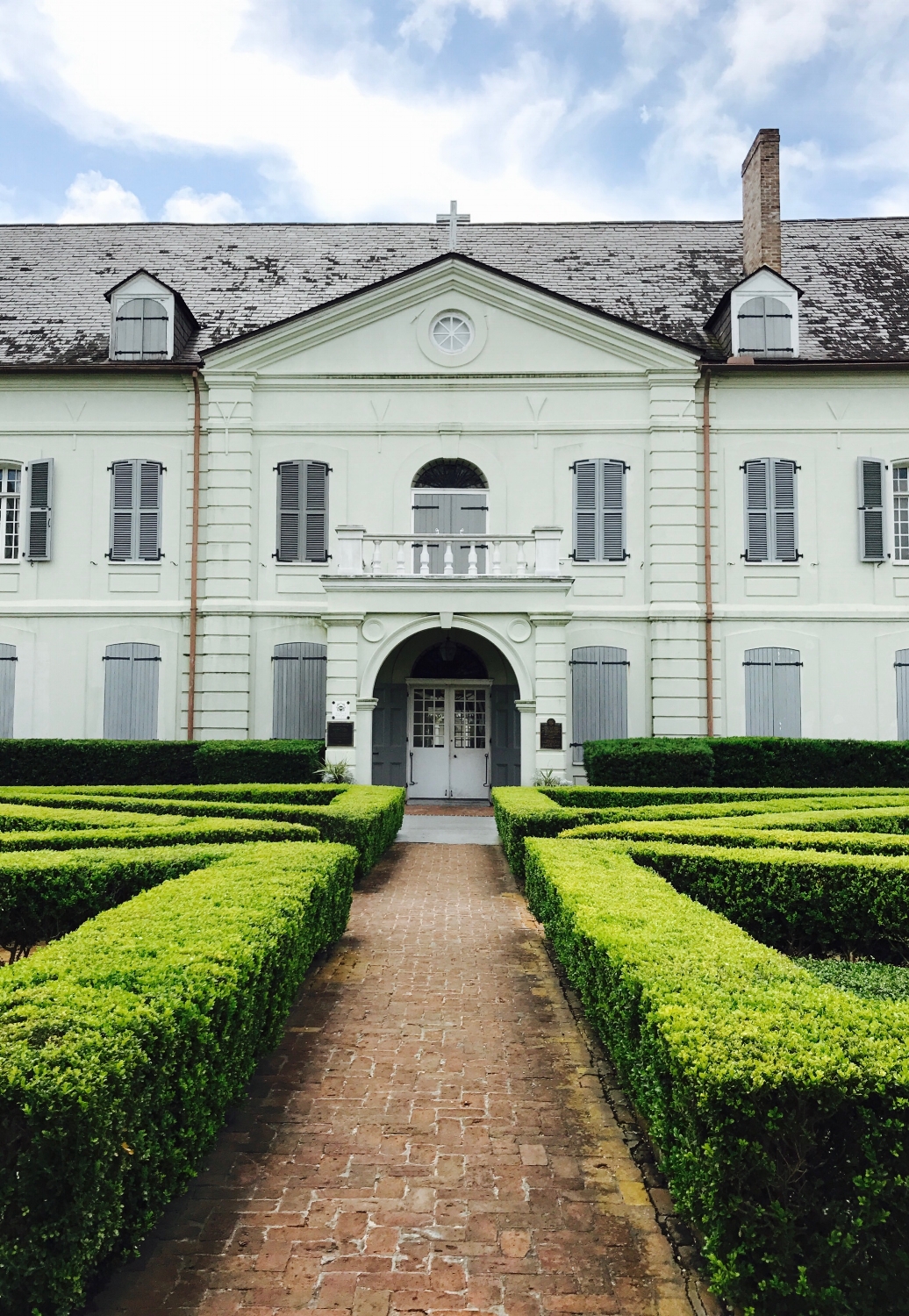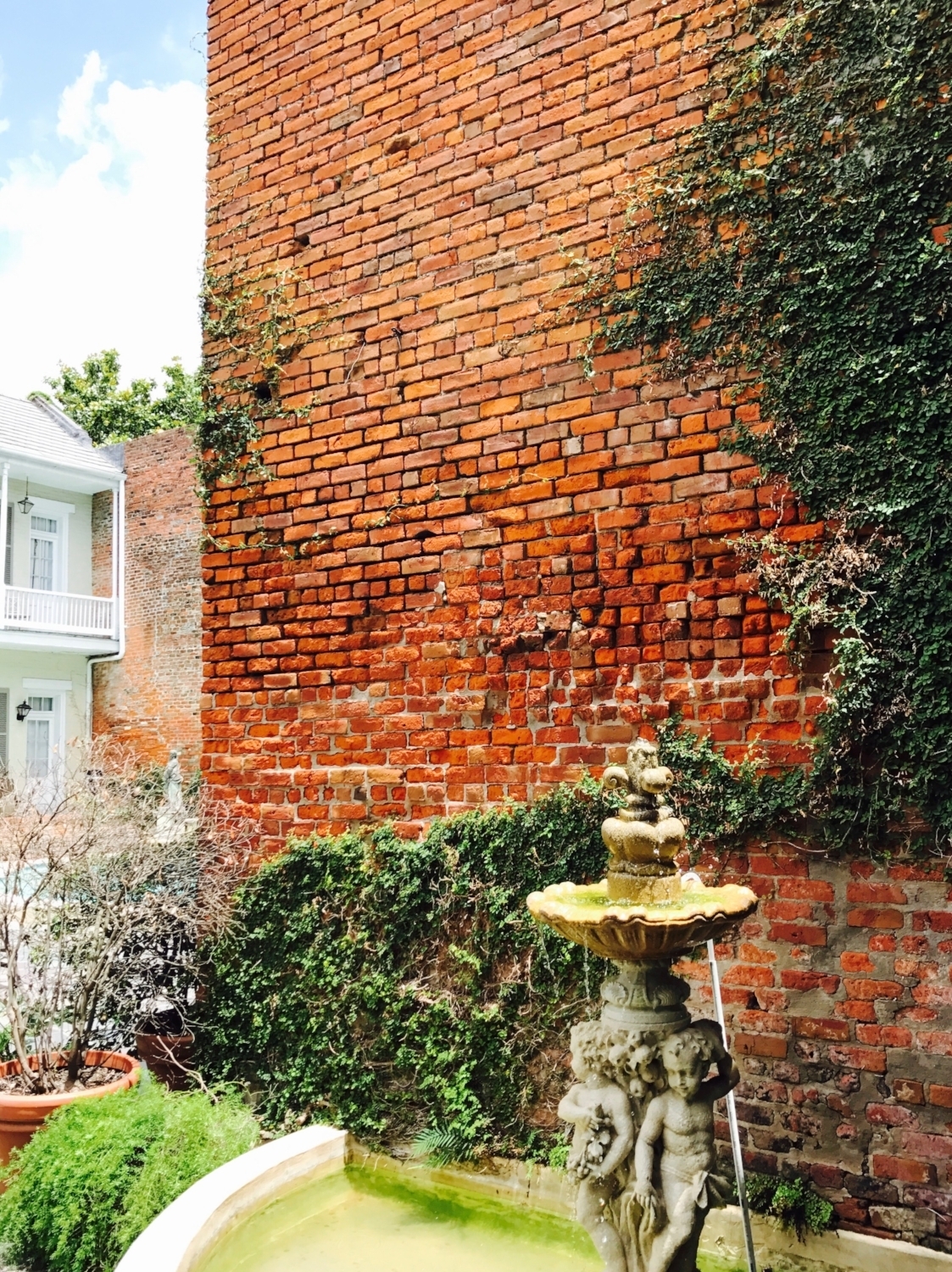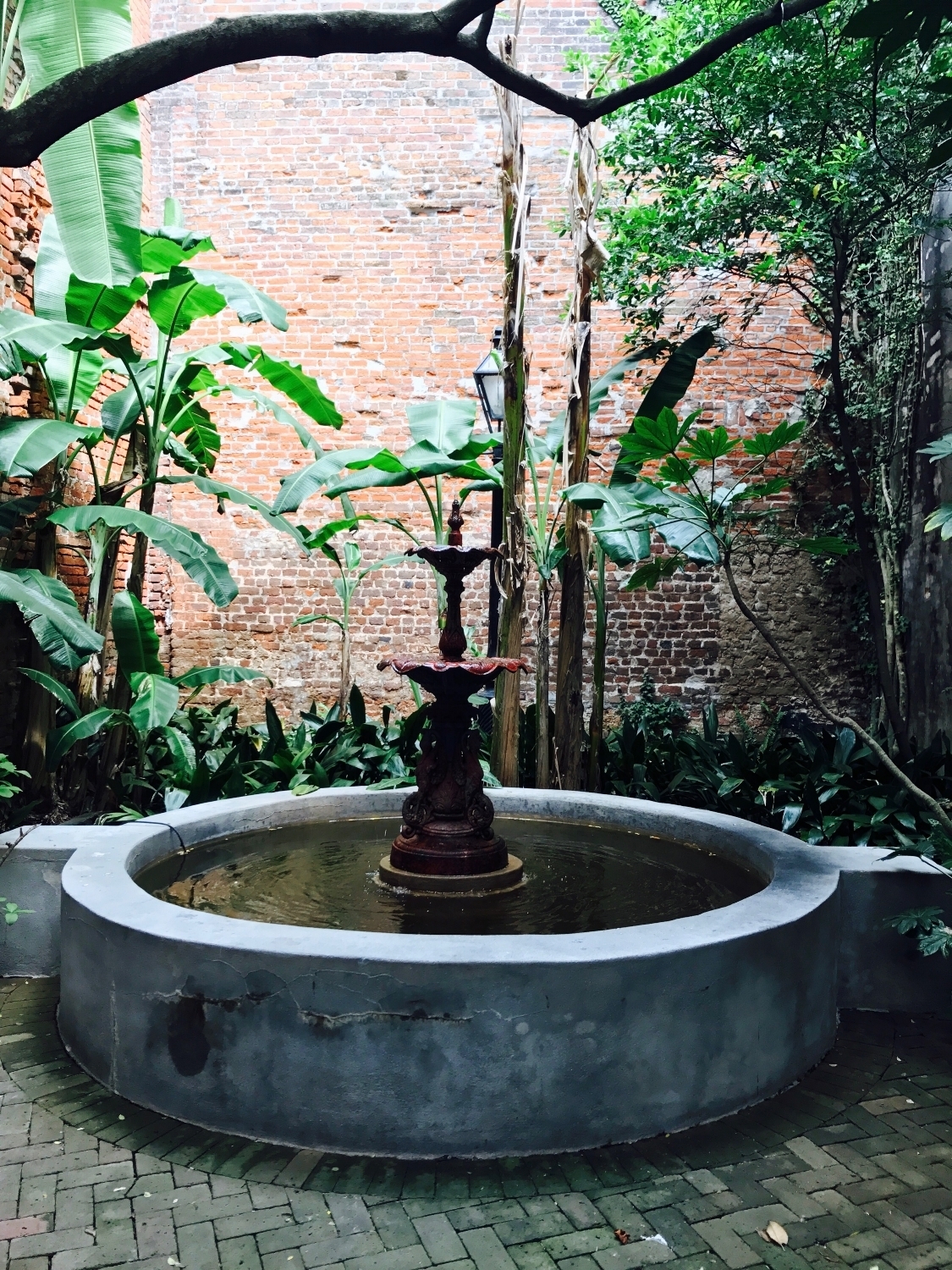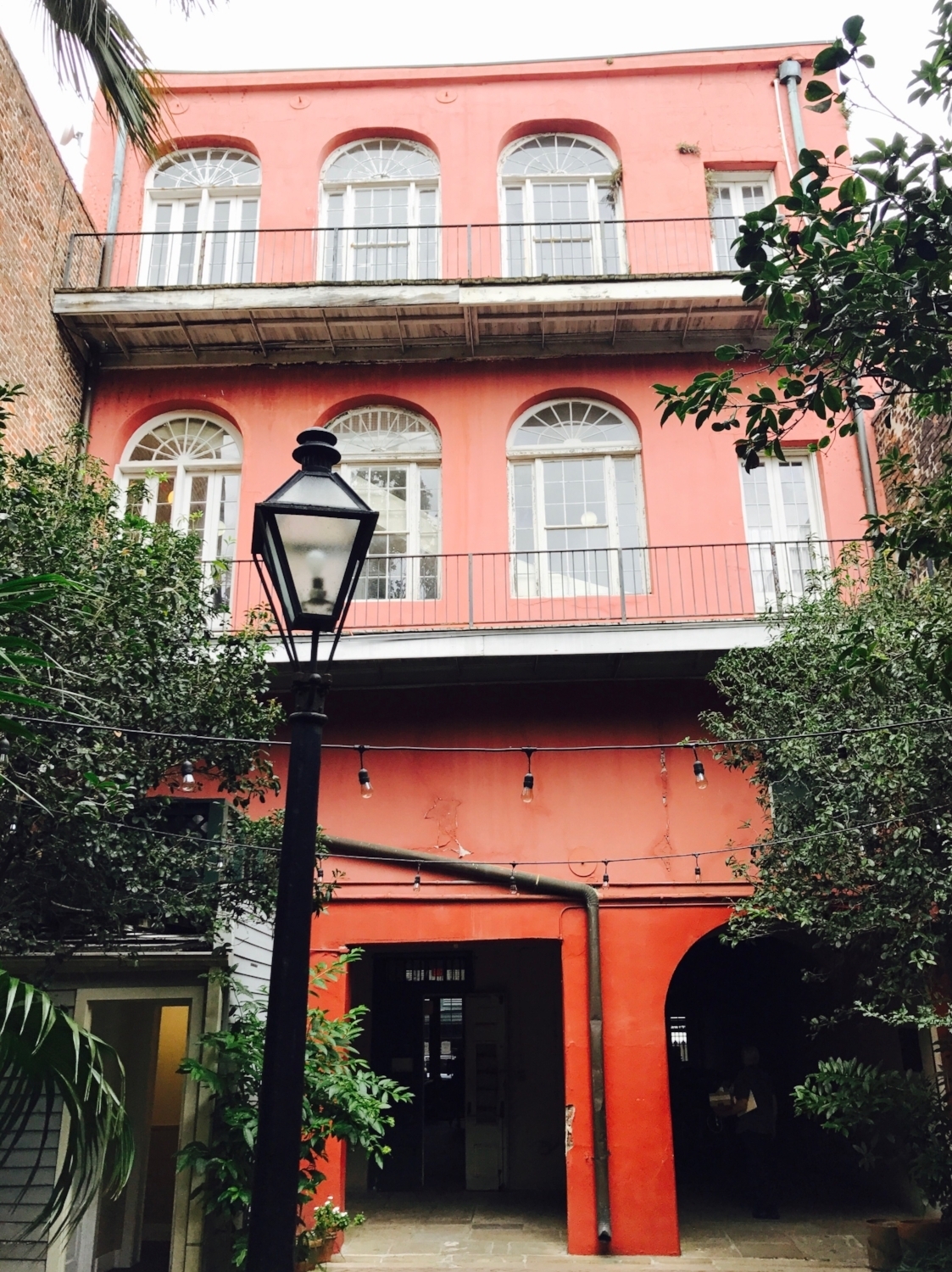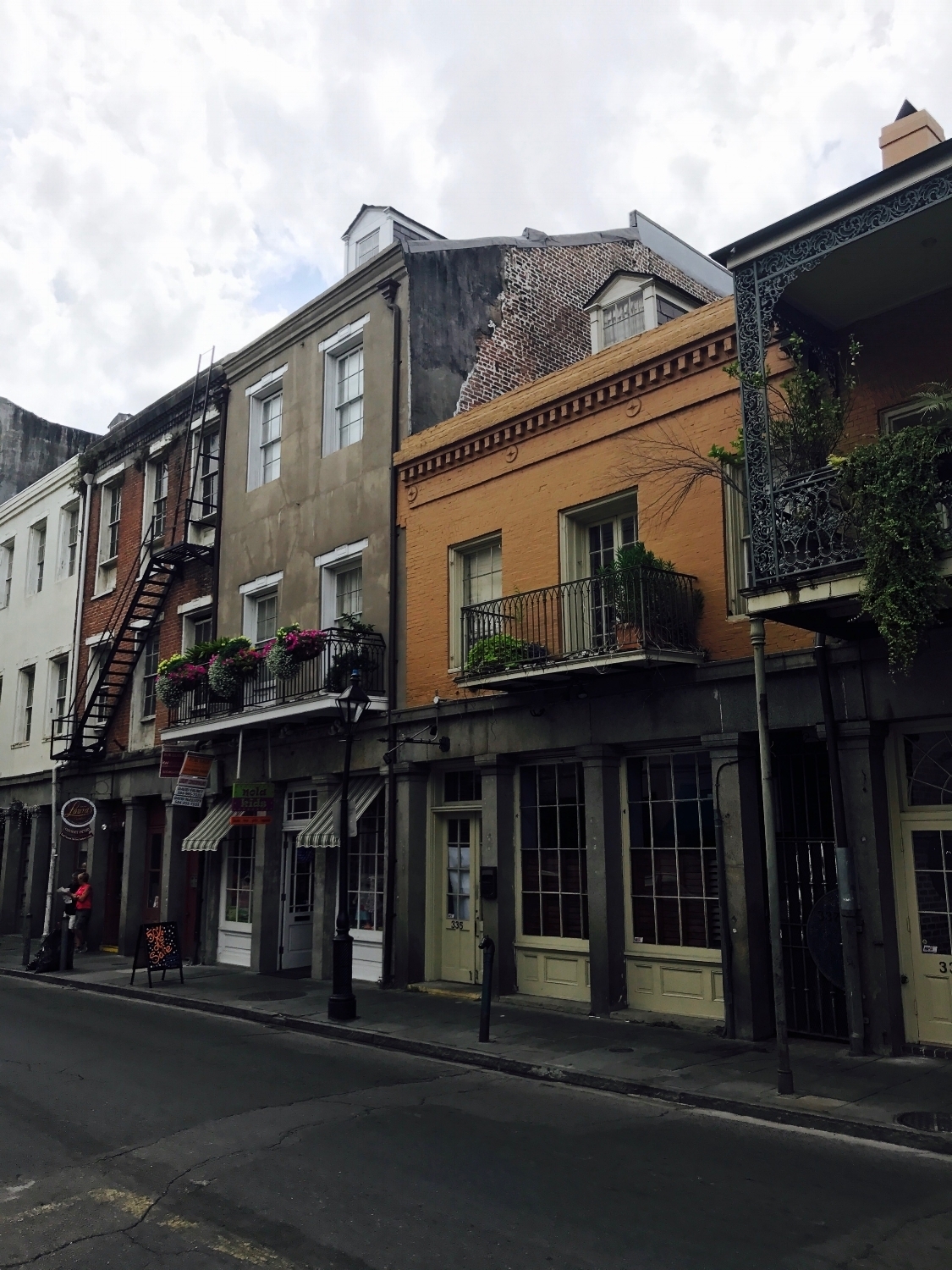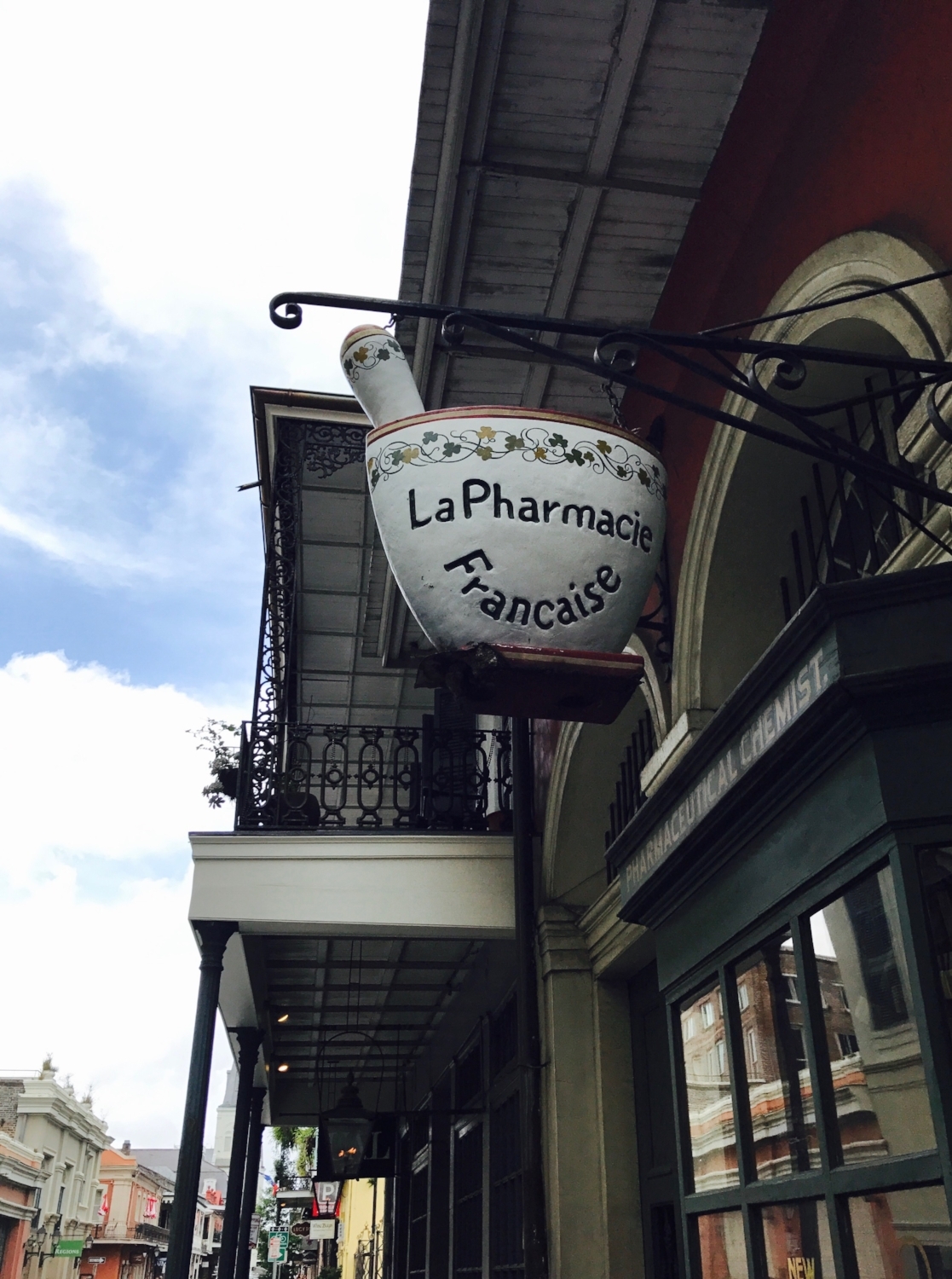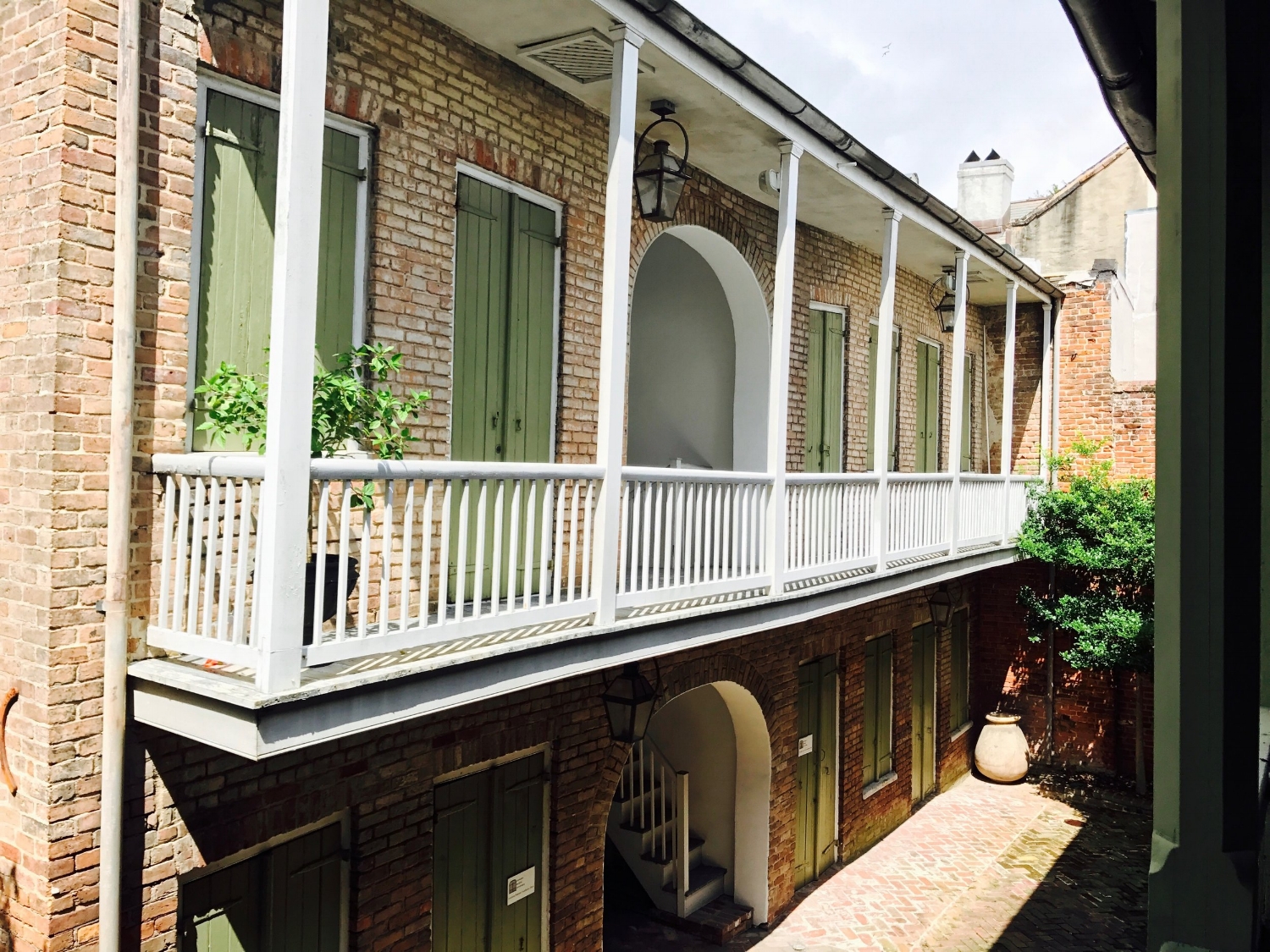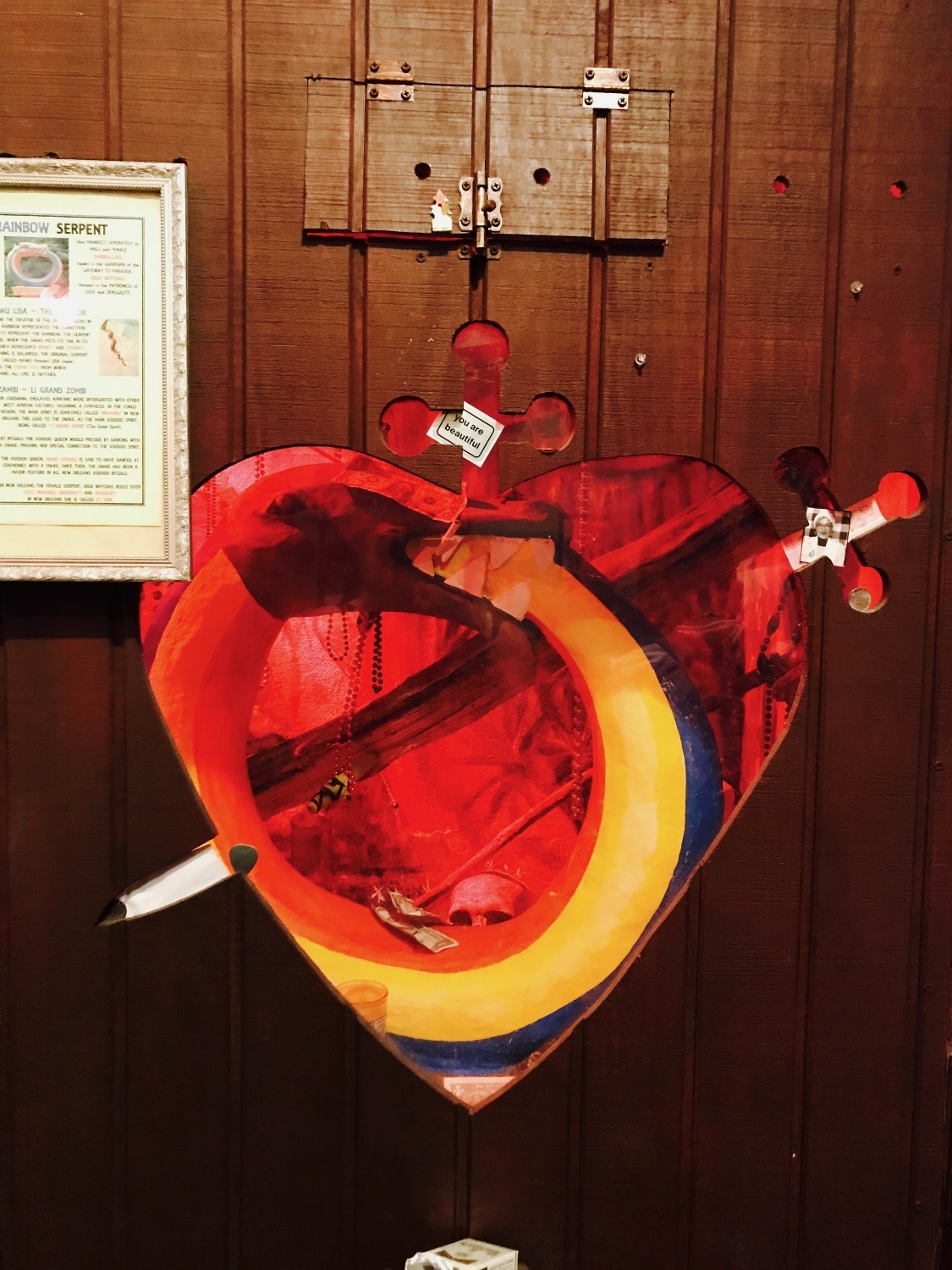“I alight at Esplanade in a smell of roasting coffee and creosote and walk up Royal Street. The lower Quarter is the best part. The ironwork on the balconies sags like rotten lace. Little French cottages hide behind high walks. Through deep sweating carriageways, one catches glimpses of courtyards gone to jungle”
Our first day in New Orleans and our second book of the trip, had taken us to the French Quarter. With Anne Rice’s novel, Interview with the Vampire, still in our hands, we jumped off the street car at Esplanade Street. We took in the scenery; the street artists with their paintings, crafts, and typewriters, the musicians with their trumpets, trombones, and saxophones, and the tourists with their visors, backpacks, and cameras. Did we really look like those other tourists? Yes, yes we did.
The French Quarter, in its day, was a bustling city-center, full of rich art, culture, and creoles. And it is preserved well, now rich with the history that made it famous with a few crumbling bricks, here and there. We admired each unique building, wedged up right against the other in neat rows down and around the city blocks. The bright colors, the intricate railings, the thick moldings, dormers, and trim, all engaged us in a historical romanticism; wouldn’t it have been amazing to have lived there? Each structure begged you to wonder how long it had stood there and how much it had seen.
We sat in Jackson Square for awhile, reading our books, Mardi Gras beads hanging in the oak trees overhead. We ate at Café du Monde, sharing plates of beignets and spent hours afterward dusting the powdered sugar from our clothes. And we listened to jazz as we talked about the city, the culture, Interview with the Vampire, and then Walker Percy’s novel, The Moviegoer.
Jackson Square had become a familiar place to us as we continued to explore the French Quarter. Our search for preserved history took us many interesting places, all within a few blocks distance. The New Orleans Pharmacy Museum, Napoleon House, the 1850 House, Madame John’s Legacy House, the Voodoo Museum, and the Old Ursuline Convent, all gave another unique facet to New Orleans’ incredibly diverse and colorful story.
The New Orleans Pharmacy Museum houses herbs, chemicals, tools, and tonics that were part of medicine and pharmacy practices in the past. The museum describes the history of medicine, especially surrounding New Orleans’ culture. Only two doors down, Napoleon House sits at the corner of St. Louis Street and Chartres Street. It was once the residence of the mayor of New Orleans, Nicholas Girod, who offered his home to Napoleon as refuge. And although Napoleon never made it, and honestly, probably never even knew Girod had offered, the name of the building never changed. Back in Jackson Square, the 1850 House is part of the series of row houses that overlooks the square, built by the Baroness Micaela Almonester de Pontabla, the daughter of a wealthy Spanish landowner who helped develop New Orleans, the French Quarter, and particularly, the St. Louis Cathedral. The house, containing period furnishings and fixtures, offers a glance into the lives of the upper classes during the boom of architecture, art, and culture, into the city. Similarly, Madame John’s Legacy House, represents the French colonial architecture that was popular during the construction of New Orleans. The Voodoo Museum explores the rituals, terms, and folklore surrounding Voodoo and its deep history in the city and with its African roots. The three small rooms of the museum are packed with altars, Voodoo dolls, bones, and art, detailing the importance of the religion and spirituality to its members, in the past and today. Only a short distance away, the Old Ursuline Convent is the oldest building in New Orleans, reminding us of the traditional Catholicism that establishes the city's gothic influences.
Each place we visited in the French Quarter reminded us of the vast diversity that encouraged New Orleans to become the ethnic, bohemia of Louisiana. And even though time has aged it, the city and its people continue to preserve all of New Orleans history and all its unique traditions. Every building, every place we stopped, encouraged our understanding of the city's web of histories. Only in New Orleans, could all these things coexist. It was, and remains, a place for Voodoo and Catholicism, for Spanish and French, African and American cultures, for political and literary debates, and for art and relics.
We had become part of that dialogue, part of the story of New Orleans, our books shedding light in corners of the city that would have otherwise been overlooked. We imagined Kate Chopin’s, Edna Pontellier on one of her famous walks down Esplanade Street, Anne Rice’s, Louis and Lestat creeping down Bourbon Street for a midnight snack, and Walker Percy’s Binx locked in an existential crisis on his way to lunch on Royal Street.


